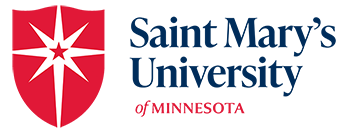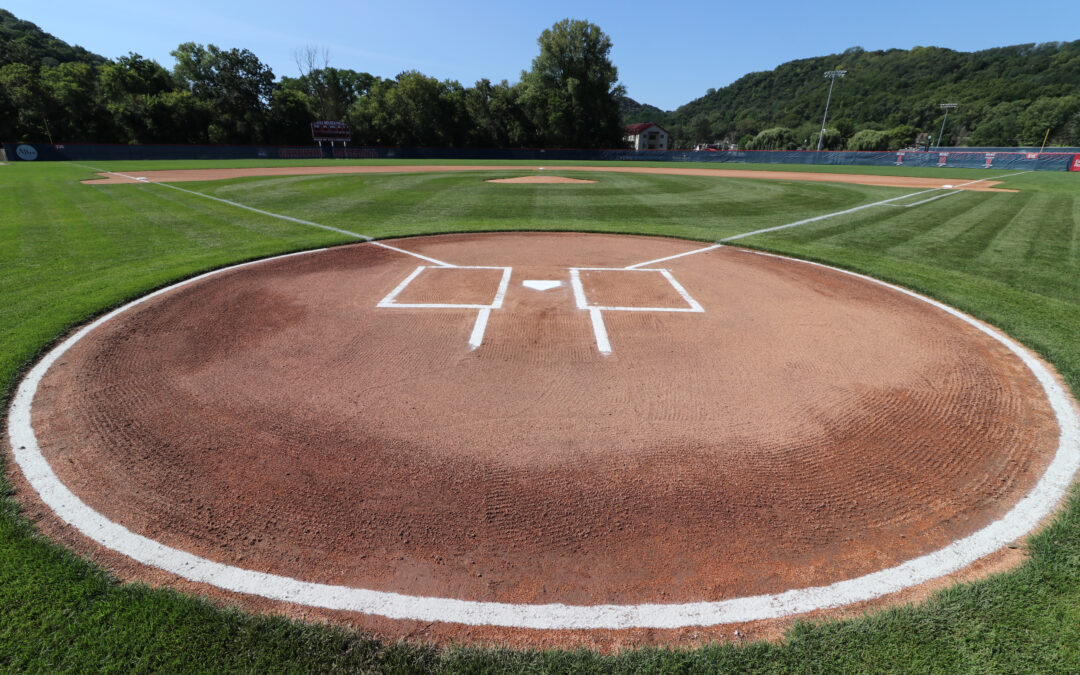WINONA, Minn. — Thanks to the generosity of two alumni benefactors, Saint Mary’s University’s Max Molock Field, and its Fastpitch Softball Field will have a new look in the fall.
Gary Klein, Saint Mary’s vice president for advancement, and Brian Sisson, athletic director, announced that a significant gift of more than $800,000 — spearheaded by former Saint Mary’s baseball players and teammates Marc Weisenburger B’75 and Bob Cerone B’75 — will be used to replace both the baseball and softball infields with artificial turf.
“We are extremely blessed with the continued generosity and support of our alumni,” Klein said. “This differentiating and transformational impact for our baseball and softball student-athletes will be appreciated for years to come and will continue to elevate our programs and enable us to provide an unmatched student-athlete experience.”
“Our baseball and softball programs are doing great things, and we can’t wait to see our new infields complete later this summer,” Sisson added. “This is such an exciting time for Cardinal athletics, made possible because of benefactors who help our programs become regionally dominant and nationally prominent.”
Weisenburger has been a longtime supporter and benefactor of Cardinal Athletics. He works with baseball coach Nick Winecke to support Cardinal Athletics, and played a significant role in the fundraising for the baseball clubhouse, which was constructed in 2019. “Baseball alumni continue to join together to advance the student-athlete experience and their commitment to being the best they can be,” Weisenburger said. “Alumni recognize how athletic departments need to be competitive in today’s environment, when students have many choices. Wanting to make a difference and creating a differentiator for the university, we identified the immediate benefit of improving the surface playing conditions, while considering the overwhelming desire to protect Saint Mary’s legendary coach Max Molock’s legacy to have the premier facilities in the MIAC. “Max would be heart-broken, having to retire the John Deere tractor that dragged the field, but we have to recognize the commitment to be the best,” he added. “New playing surfaces for our student-athletes, and the ‘Give to the Max’ programs fulfill a continued commitment to remember Max Molock’s legacy.”
The Give to the Max program was also started by Weisenburger. Named in honor of Molock and because Weisenburger and Winecke know players seek to achieve excellence, or “give their max” both on and off the field, the program provides each Cardinal baseball player approximately $500 worth of essential baseball equipment and related athletic gear each year, once again helping to provide Saint Mary’s student-athletes the ultimate athletic experience.
As Weisenburger’s energy has been focused on the turf project, Bob and Cathy Cerone graciously continue to support “Give to the Max” by serving as the program’s major benefactors.
“Cathy and I are delighted to join Marc in creating a quality, first-rate experience for our Cardinal student-athletes,” said Bob Cerone. “Our experience at Saint Mary’s was very rewarding. We hope to encourage others to join us in creating an outstanding athletics program for the future. We recognize the need to maintain our exceptional coaching staff along with providing state-of-the- art facilities for our athletes.”
After this past season, in which countless games were postponed due to poor weather and playfield conditions, the turfed fields will be a welcome addition, according to both baseball coach Nick Winecke and fastpitch softball coach John Tschida.
“If you look at our progression — where the program has gone in the last 15 years — a lot of our growth has to do with the willingness of former players to create a wonderful experience for our baseball and softball student-athletes,” said Winecke. “Our alumni have been true trend-setters for what it means to give back — not just monetarily, but with all the support they have provided to Saint Mary’s and by demonstrating all that being a student-athlete stands for.”
According to Winecke, changing the infield to turf — from the start of the outfield grass all the way to the backstop and extending the lengths of the dugouts — will allow the Cardinals more opportunity to play early in the year, while saving time and manpower.
“The dirt field takes a long time to be game-ready, due to frost, rain, and fluctuating temperatures,” he said. “We couldn’t play many games this past year because of poor infield conditions — this is going to alleviate a lot of that.”
Tschida agrees. “We are very grateful for any gift of any amount, but this is a significant gift that our softball program will benefit from in so many ways,” he said. “Being part of the front porch of our university, everyone who drives in or out of our campus will be able to appreciate a well-groomed, game-lined, and clean-cut field.”
Construction on the new turf project will begin in July and will be ready for play at the start of the 2023-24 academic school year. This generous gift will also be allocated toward Saint Mary’s $100 million goal, set by a recent anonymous $25 million benefactor. The $25 million gift, the largest in Saint Mary’s history, was made to inspire others to step forward to support the university and to position it for a strong and successful future.

